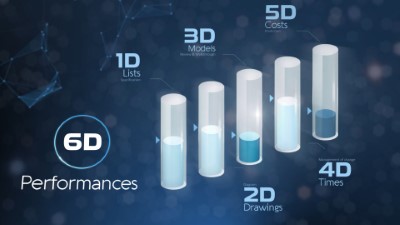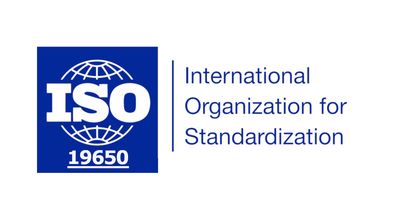News&Press, Use Case
02/19/23
Building Information Modelling (BIM) has revolutionized the architecture, engineering and construction industry. It provides a digital representation of buildings and infrastructure, allowing for better collaboration, visualization, and analysis of designs. BIM is widely used in construction, but its benefits extend to the operation and maintenance of industrial assets. To standardize the application of BIM in the industrial sector, the International Organization for Standardization (ISO) developed the ISO 19650 standard. This article is a comprehensive guide to the five parts of the ISO 19650 standard for industrial asset.
The first part of the ISO 19650 standard provides an overview of the concepts and principles of BIM for industrial assets. It defines BIM as a digital representation of physical and functional characteristics of an asset, which can be used for decision-making throughout the asset lifecycle. The standard emphasizes the importance of a collaborative approach to BIM, with clear communication, roles and responsibilities, and information exchange protocols. It also highlights the need for data quality and security, as well as the use of common data environments (CDE) to manage and share BIM data.
The second part of the ISO 19650 standard focuses on the delivery phase of the assets, which includes the design, construction, and commissioning of the asset. It outlines the requirements for BIM deliverables, such as models, drawings, and specifications, as well as the information exchange protocols between the parties involved in the project. The standard also sets out the requirements for the management of BIM data, including the use of a CDE, the definition of data requirements, and the verification of data quality.
The third part of the ISO 19650 standard covers the operational phase of the assets, which includes the maintenance, renovation, and decommissioning of the asset. It highlights the importance of a seamless transition from the delivery phase to the operational phase, with the transfer of BIM data and documentation. The standard sets out the requirements for the management of BIM data during the operational phase, including the use of a CDE, the definition of data requirements, and the verification of data quality. It also emphasizes the use of BIM for asset management, such as the monitoring of performance, maintenance scheduling, and risk assessment.
The fourth part of the ISO 19650 standard focuses on the collaborative production of information, which is the core of BIM. It outlines the requirements for information management, such as the identification of information requirements, the definition of information exchanges, and the validation of information quality. The standard also sets out the requirements for the management of BIM data, including the use of a CDE, the definition of data requirements, and the verification of data quality. It emphasizes the importance of a structured approach to information management, with clear roles and responsibilities, communication protocols, and change management procedures.
The fifth and final part of the ISO 19650 standard sets out the requirements for asset information requirements (AIR), which are the information needs for an asset throughout its lifecycle. It defines the process for identifying, validating, and documenting AIR, as well as the requirements for the delivery of AIR in the form of BIM data and documentation. The standard also emphasizes the importance of a collaborative approach to AIR, with clear communication, roles and responsibilities, and information exchange protocols.
In summary, ISO 19650 is a series of standards that specify the management of information using Building Information Modeling (BIM). The series consists of five parts that cover different phases of the asset lifecycle, including planning, design, construction, operation, and maintenance. Each part of the series provides recommendations for defining an information management framework, including exchange, recording, version control, and organization. ISO 19650 can be applied to all types and sizes of assets and by all types of organizations involved in the construction and management of buildings and other built assets.
If you are interested in learning more about ISO 19650 and how it can be applied to your organization or project, you can check the provided web search results for more information on each part of the series. You can also visit the official website of the International Organization for Standardization (ISO) to access the full text of the standards and related documents.
The multi-dimensional Building Information Modelling 1D to 6D
The Global D-Vision

As a BIM Expert with over 20 years of experience, I have witnessed the evolution of BIM processes and tools, and how they have been instrumental in improving industrial plant engineering design. The multi-dimensional BIM ISO 19650 standard series has made it even more feasible to take plant design to the next level by incorporating 1D lists and datasheets, 2D schematics and drawing, 3D primitive model and lazer scan, 4D time, 5D cost, and 6D sustainability.
I will describe how each of these dimensions can enhance plant design:
These are essential for capturing information about the components that are to be installed in the plant. They provide a detailed list of the components, their properties, and their manufacturers, enabling the design team to make informed decisions.
Schematics and drawings provide a graphical representation of the plant design, making it easier for stakeholders to understand the layout and positioning of the equipment. They also help identify clashes between components, which can be addressed before construction begins.
A 3D model provides a detailed representation of the plant, enabling the team to visualize the layout and design of the plant in a more realistic manner. A laser scan can also provide a point cloud of the plant, which can be converted into a 3D model. This helps identify clashes between components and improves the accuracy of the design.
The 4D dimension adds time to the BIM model, providing a simulation of the construction process. This helps the design team to schedule the construction work more efficiently and minimize delays. It also helps the team to identify any clashes between components that could occur during the construction phase.
The 5D dimension adds cost to the BIM model, providing a more accurate estimation of the cost of the project. This helps the project team to manage the budget more efficiently and make informed decisions about cost-saving measures.
The 6D dimension adds sustainability to the BIM model, enabling the team to assess the environmental impact of the project. This includes energy consumption, carbon emissions, and water usage. The design team can then make informed decisions about reducing the environmental impact of the project.

In conclusion, the multi-dimensional BIM ISO 19650 standard series provides a comprehensive framework for enhancing industrial plant design.
By incorporating 1D lists and datasheets, 2D schematics and drawings, 3D primitive model and laser scan, 4D time, 5D cost, and 6D sustainability, the design team can make informed decisions and optimize the plant design to meet project requirements, budgets, and environmental standards.
Know more…
About GIS, BIM and PLM Approach

The ISO 19650 series of standards sources outlines the principles and requirements for information management using Building Information Modeling (BIM) throughout the entire lifecycle of a built asset.
ISO 19650-1 [1] provides recommendations for defining an information management framework that includes exchange, recording, version control, and organization for all actors involved in the lifecycle of a built asset, from strategic planning to the end of life. It can be adapted to assets or projects of various scales and complexities to ensure flexibility and versatility.
ISO 19650-2 [2] and ISO 19650-3 [3] specify the requirements for information management during the realization and operation phases of assets, respectively, using BIM. These standards can be applied to all types of assets and organizations regardless of their market strategies and sizes.
ISO 19650-4 [4] defines the requirements for information exchange using BIM, including the identification of the information required for exchange, its format, and its delivery method.
Lastly, ISO 19650-5 [5] focuses on the principles and requirements for information management that prioritize security when using BIM, from creating a culture and mindset of appropriate security to monitoring and verifying compliance.
In summary, the ISO 19650 series of standards provides guidelines for information management using BIM in the entire lifecycle of built assets, ensuring flexibility and versatility in its application. These standards apply to all types and sizes of assets and organizations regardless of their market strategies. Additionally, ISO 19650-5 emphasizes the importance of security in the use of BIM.